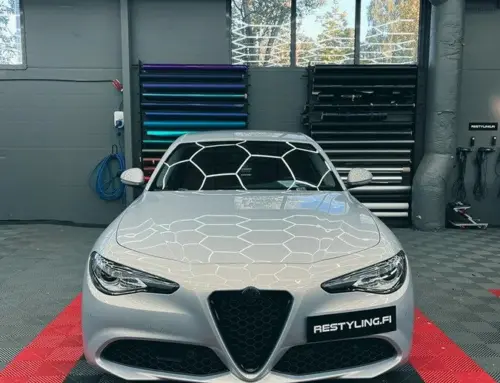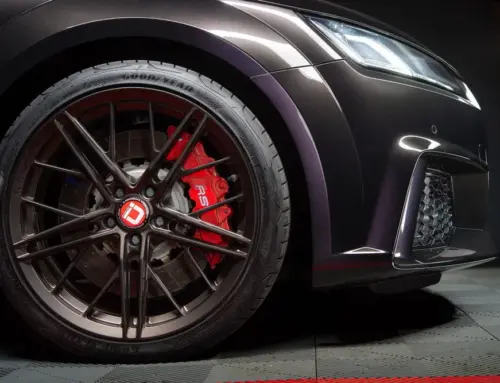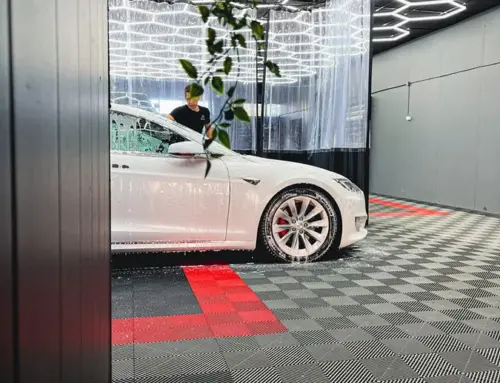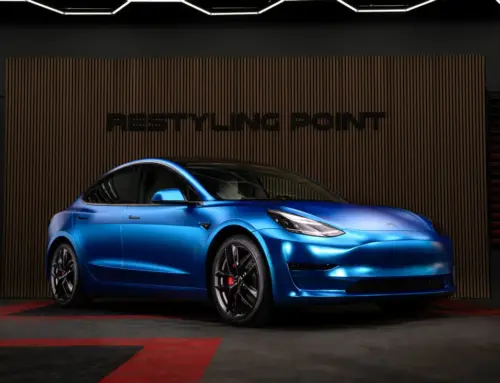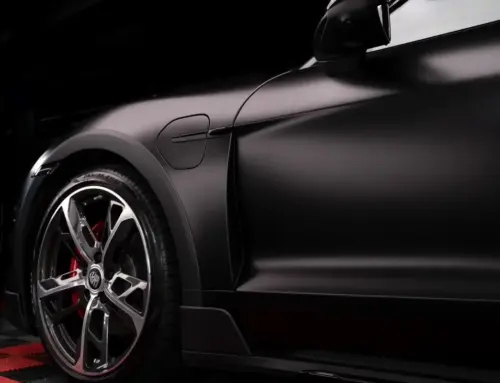- General
- Air bubbles under the film
- Heating wires, scratches on the glass surface, and raster edge
- Curved rear windows and tint film “from one piece”
- Loose tint films
- Placement of tint film
- Fit and condition of door upholstery
- Car paint and seals
- Dog hair under the film
- Quality of tint film
General
There are international standards for car window tinting, which determine the successfulness and quality level of window tint installation.
Car window tinting is genuine craftsmanship, and its outcome depends mainly on the experience of the window tinter. The quality of the tint film and its impact on the successful outcome is not significant, as 15 years of experience show. Even with tint films from Motonet, an excellent installation result can be achieved. Therefore, it can be said that for a commendable result, 85% depends on the installer’s experience, 10% on the quality of the tint film, and 5% on the history of glass usage.
Car window tinting is done using tint films available in different levels of darkness. The darkness level does not affect the difficulty of the work or the cost of car window tinting when talking about traditional tint film series, not ceramic films or transparent sun protection films for windshields.

Rear windows are typically the most curved window surface of a car and often the tightest space for tint film installation, especially in sedan models. In station wagons, rear windows are usually on the easier side, unless there is an exceptionally long and narrow rear spoiler.

The tint film must be shaped identically to the curvature of the rear window itself. There should be no wrinkles in the film heated and installed to shape, as they are the clearest sign of poor shrinking process. The surface of the film must be smooth and wrinkle-free. The film must completely cover the transparent glass opening.
There are car models with a narrower than usual rear window area, such as the Audi A8 and BMW 7 Series. However, there are individual technical installation techniques for these models that can achieve an excellent end result.
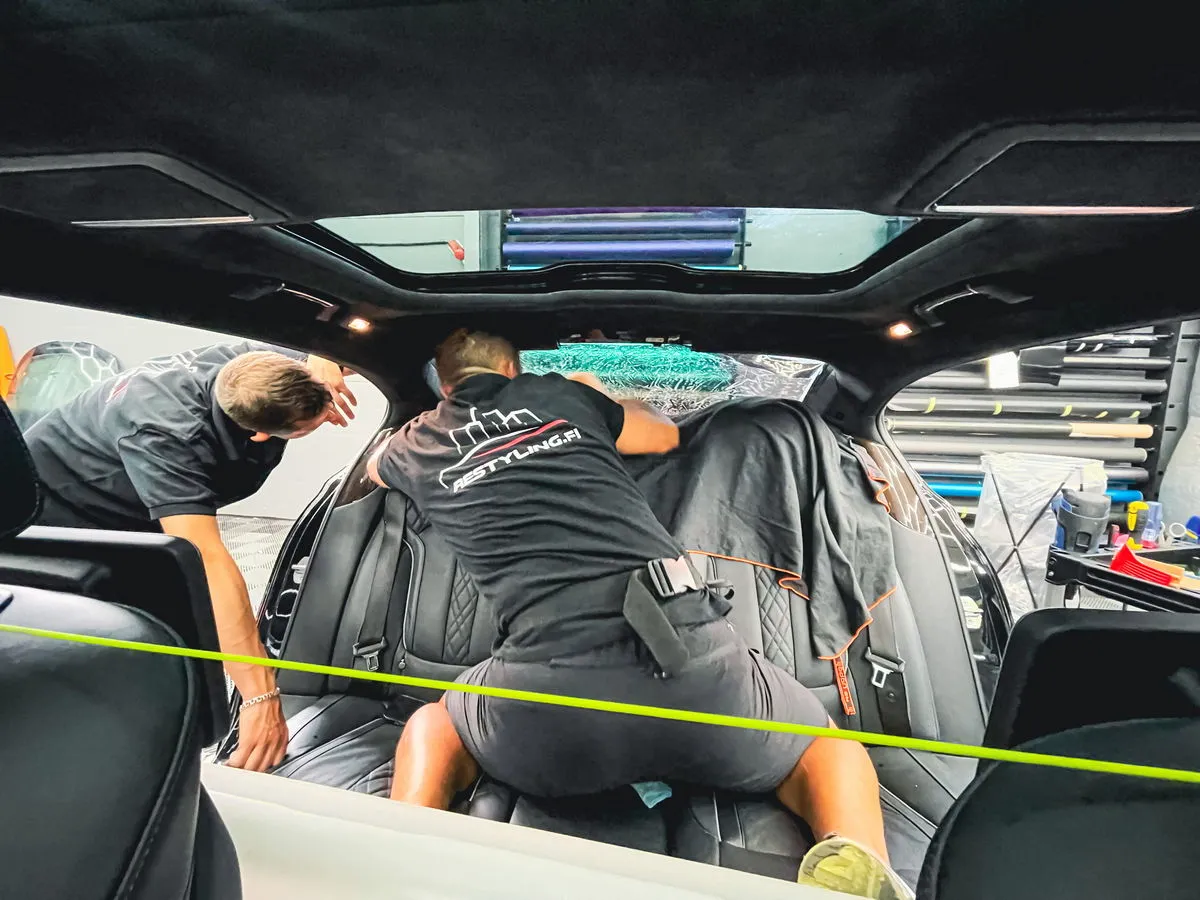
Air Bubbles Beneath the Film
There shouldn’t be many air bubbles under the film. After installation, there might be water trapped under the film, which is completely normal. The water will evaporate during summer within a few days and during winter within a few weeks. This is entirely normal and expected because window tint is always applied with the help of an installation fluid. Therefore, there’s no need to worry about a few air bubbles.
However, what is often mistaken for air bubbles are dirt and dust particles that, unfortunately, never dry out. Consequently, many mistakenly refer to them as air bubbles because they look similar. When dirt particles accumulate, they create air pockets around them, resembling air bubbles.
Our atmosphere contains dust particles, so during installation, a few particles of dust may find their way between the film and the glass, appearing as bubbles. According to the International Window Film Association, tinted windows should look good when viewed from a distance of 2 meters. Nevertheless, at Restyling Point, our quality standards are higher. Our aim is a completely dust and bubble-free installation. Despite our 40,000 hours of experience, advanced installation technology, and rigorous standards, aiming for daily perfection, since this is a manual process, theoretically, a few individual dust particles may still remain under the film.
Therefore, it’s acceptable to have occasional small particles of dust under the film, but large accumulations in one place are not acceptable.
Dust particles, often resulting from inadequately cleaned glass, are usually found most commonly at the edges and corners.
Especially in older cars and vans, one often encounters marks on the glass surface left behind by welding or grinding sparks. These leave marks on the car’s glass, some of which cannot be entirely removed. In such cases, the sparks are visible between the film and the glass.
Heating Wires, Glass Surface Scratches, and Raster Edge
In rear windows, heating wires and their orange color are always emphasized after tinting, as well as the edges of the transparent area, known as rastering.
The rear window, typically due to the rear wiper, is the most scratched glass surface on a car. Therefore, after tinting, all scratches become more visible on the outer surface of the glass.
Rastering refers to the black raised dots on the inner surface of the glass, made for aesthetic reasons (to make the transition between the transparent and opaque areas as smooth as possible). These dots are raised so high that thick and stiff tint film simply cannot adhere to the gaps between them, resulting in a light stripe along the raster edge that makes the film appear as if it’s detached. In reality, however, the film is indeed adhered because it’s also cut 2-4mm larger than the transparent area. Therefore, there’s no risk of the film detaching.
For example, many Italian and French cars don’t have this raster edge.
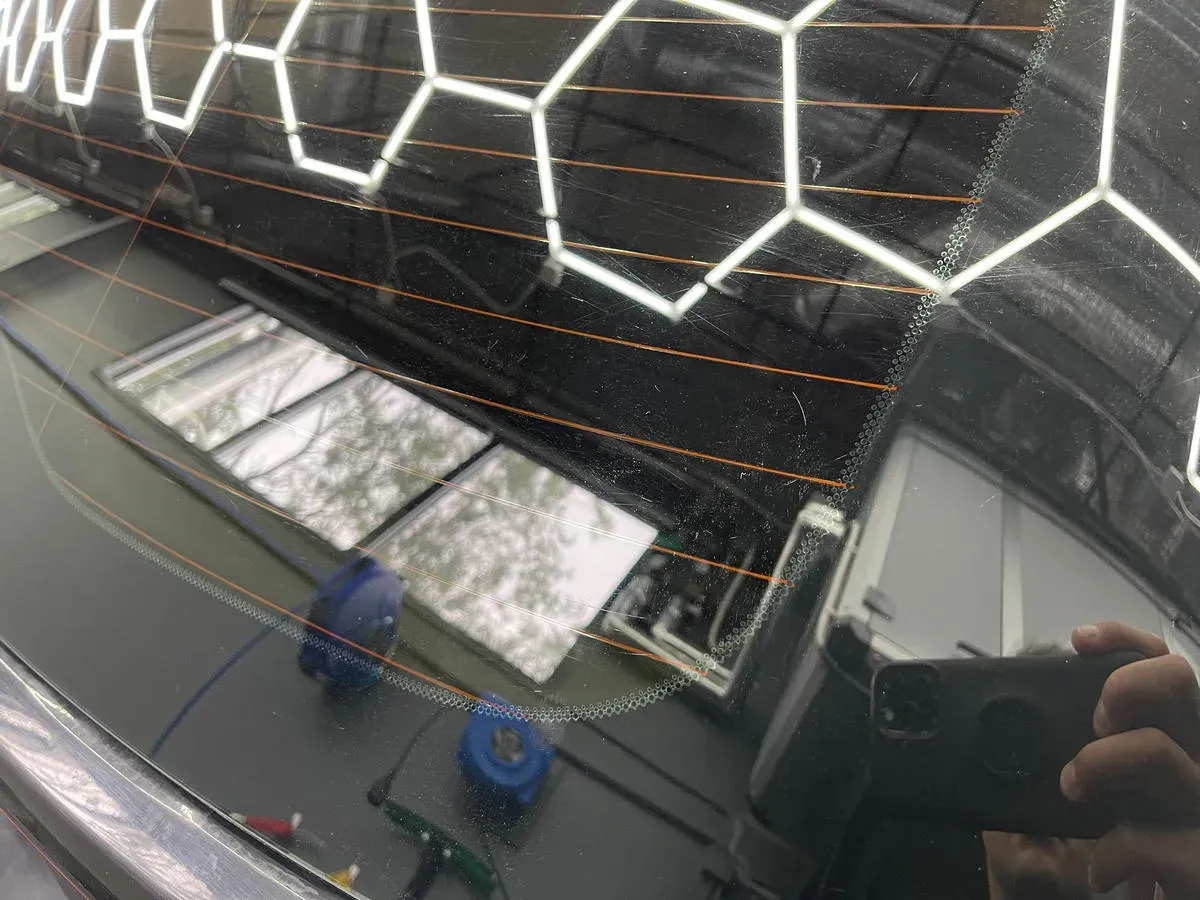
For example, in the BMW 3 Series Coupe, there is an exceptionally large raster area, and with a little effort and technique, it can be made to look stunning without requiring a significant amount of additional cost.
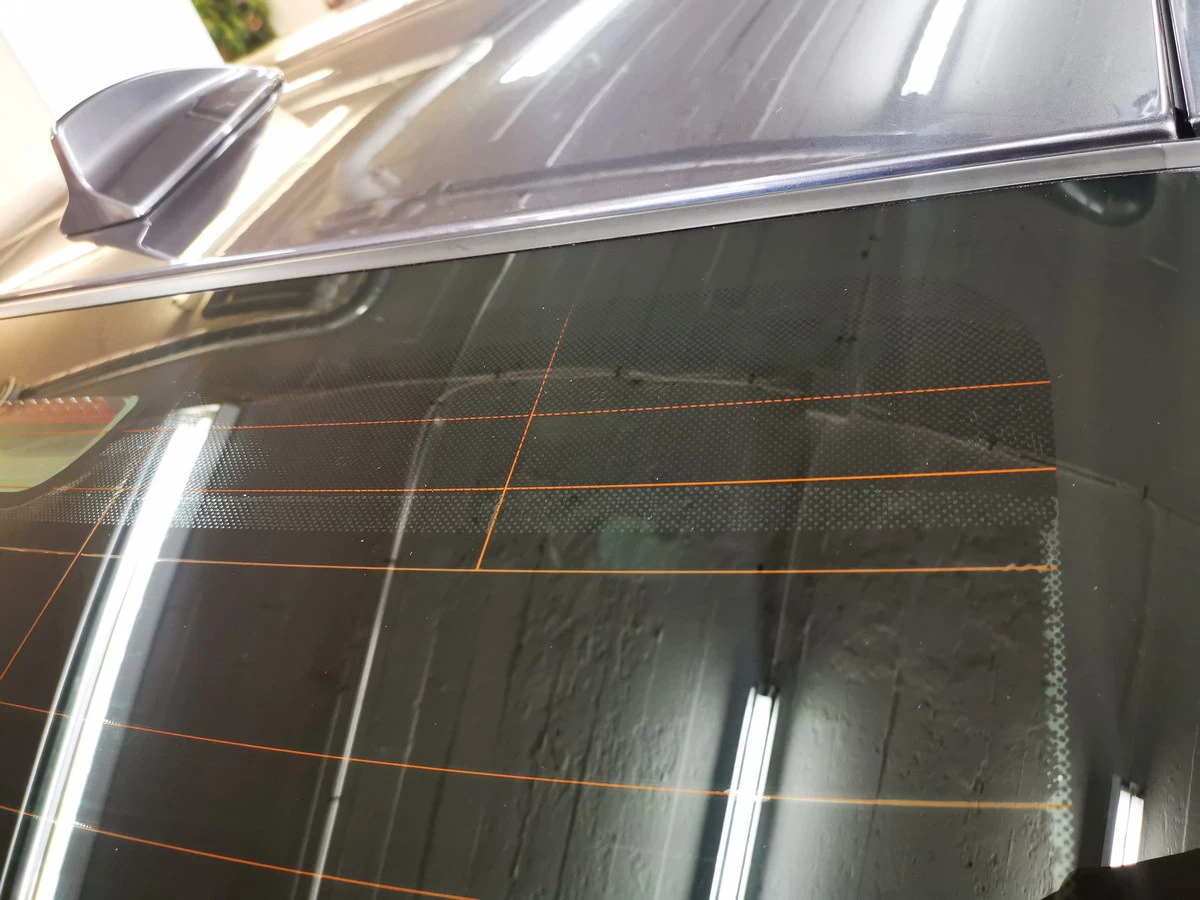
Large rust area installed with special technique
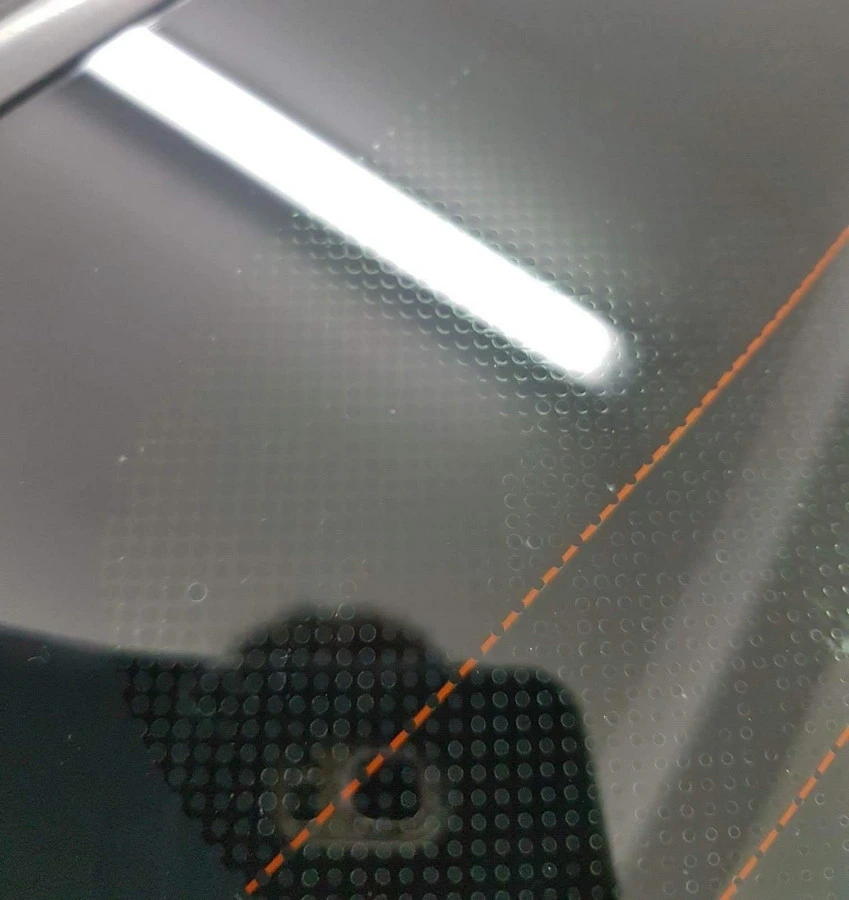
Curved Rear Windows and Tint Film in “One Piece”
In the automotive industry, there are well-known car models with larger and more curved windows.
These include, for example, the Tesla Model 3, Peugeot 307 SW, VW Beetle, Audi TT, Chevrolet Corvette, Chevrolet Bel Air, Renault Clio, and others.
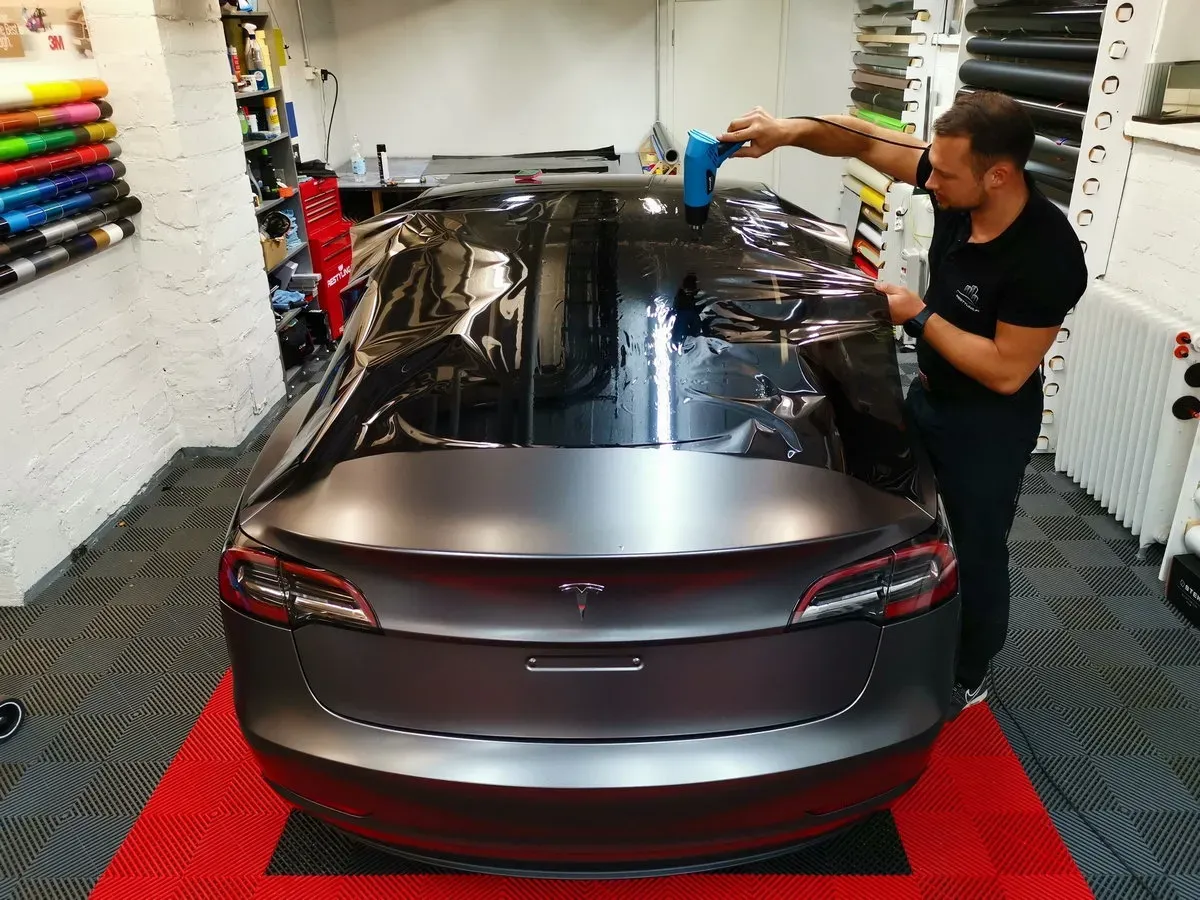
In the aforementioned car models, the rear windows are so curved that shrinking the film to fit requires a higher level of experience and expertise from the installer. The easiest way to address this level of difficulty is to use two pieces of film for the window, which is itself a completely unprofessional option.
For example, in our industry, there’s even a term coined for the Tesla Model 3: the “tornari” (in military terms; rumor), which suggests that the rear windows of the Model 3 shouldn’t be tinted with a single piece of film because it accumulates too much heat load. This is amusing disinformation that is untrue and is told to customers to explain why the rear window can’t be tinted in one piece.
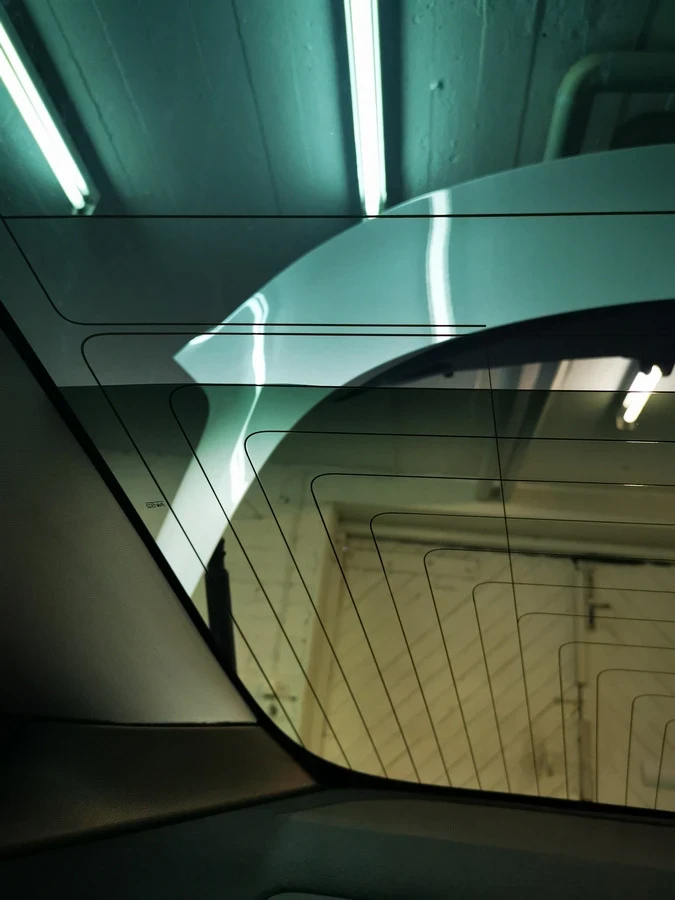
Tinting the rear window with two pieces or one piece that doesn’t fully cover it is also a visually inadequate solution. It is highly visible when looking at the rearview mirror.
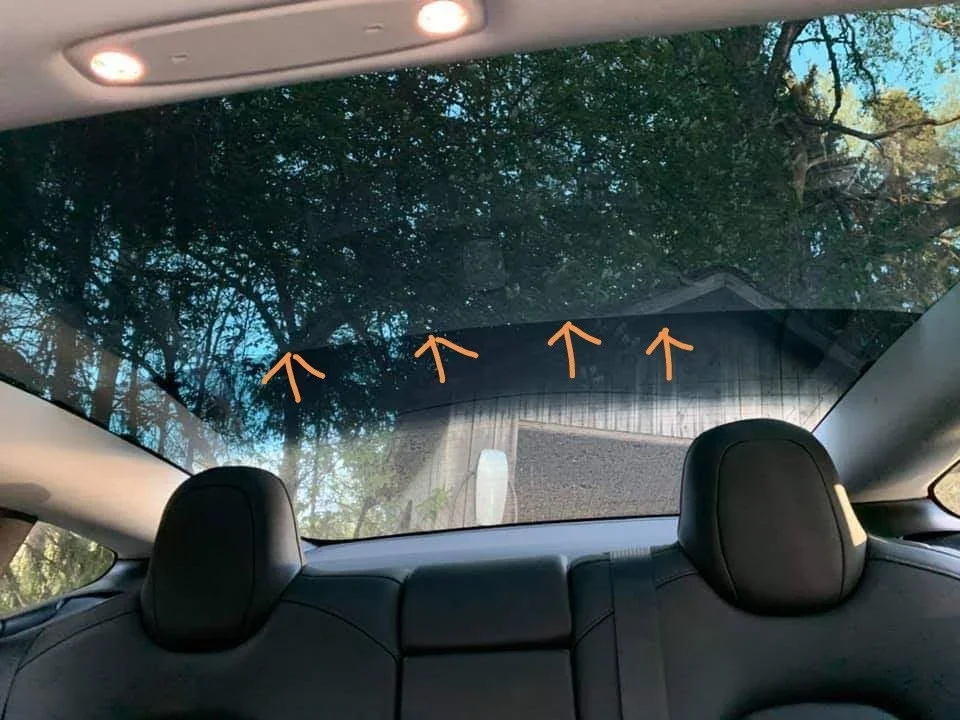
Loose Tint Films
The truth is that properly installed films do not come loose. There are extremely rare situations when the film detaches due to external factors or a third party, including:
- Ice in the rubber seal of frameless windows, which has lifted the side or top edge of the film
- Especially in collision-damaged cars, where a part or seal inside the door trim is too close to or tightly against the glass surface, thus rubbing against the edge of the film.
These rare cases have only occurred 1-3 times among thousands of cars over a 10-year period.
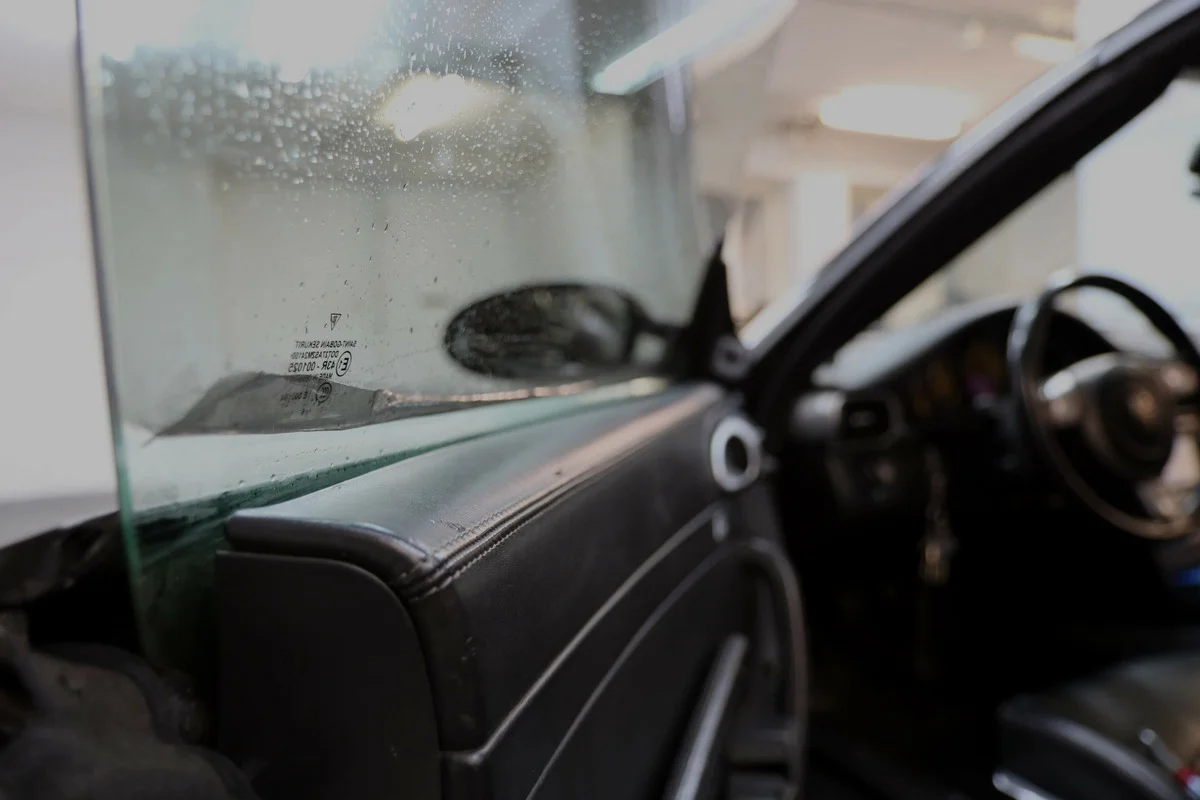
The most common and simplest reason for window tint film coming loose is the installation method itself. The most common installation mistake in car side window tinting is leaving the bottom edge too high. This allows the bottom edge of the film to rub against the inner seal, causing stress and leading to the edge of the film detaching.
This occurs due to the so-called “top loading” installation method, where the seal is not removed, and the film is carefully pushed under the seal. The problem lies in the fact that with this window tinting method, it’s not possible to see if the film goes down far enough or to control whether the film is properly adhered to the glass along every millimeter.
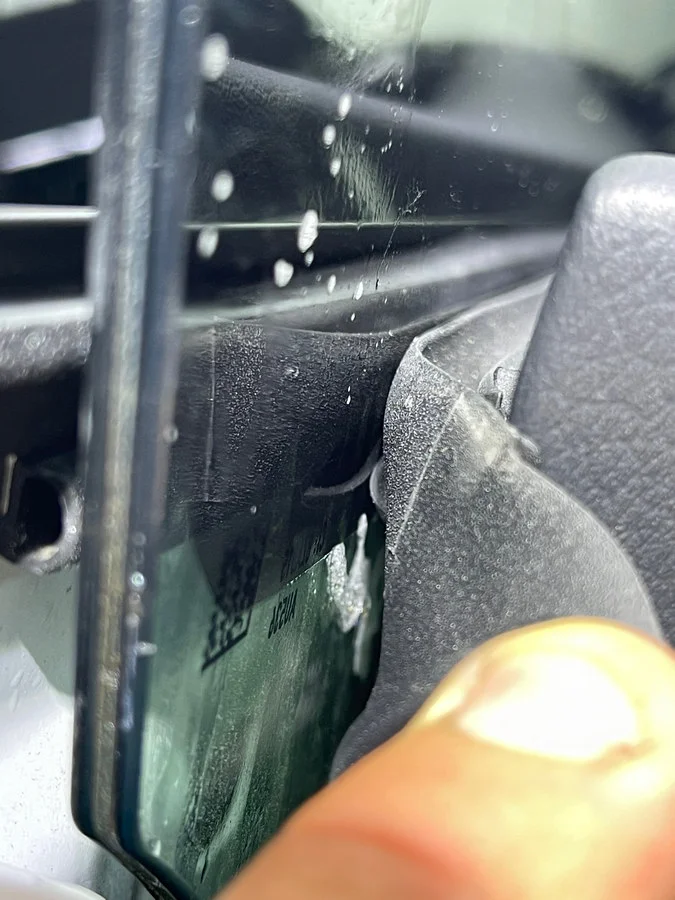
Window Tint Placement
Window tint should cover all side and bottom edges on framed windows, with no light or similar visible. The allowed distance from the top edge is 1-3 mm. If the edge of the film is more than this or if it’s cut asymmetrically / diagonally, it doesn’t look aesthetic.
As seen in the photo below, the distance from the edge of the window tint to the edge of the glass is far too large.
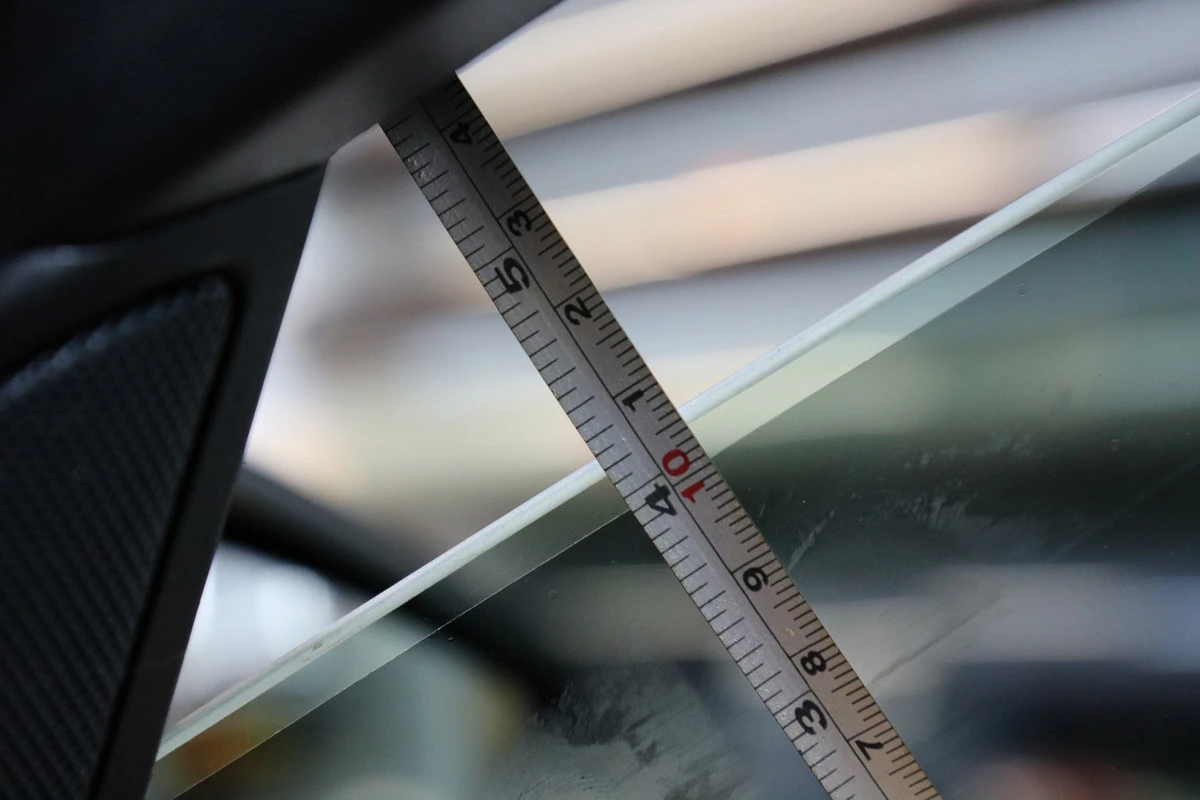
Incorrect cutting method in car window tinting.

General quality standards for front windows are similar to those for rear doors. This means that a gap between the film and the glass edge is acceptable for front doors. However, at Restyling Point, we always shave the edges of the front windows. The purpose is to reduce our customers’ risks in potential inspection situations. Therefore, we shave the top edge of the film along with the top edge of the glass in a way that it cannot be discerned by sight or by scratching that the front door has been illegally tinted. You can find more information about front window laws and real risks in our blog post:
Fit and Condition of Door Trimming
There are cars where door panels do not need to be removed and cars where removing door panels is necessary for successful window tinting. Typically, simply loosening the door panel from the top and removing the seal is sufficient for a perfect result.
Removing panels is entirely risk-free, and there are car models where the clips are disposable. Therefore, tinting shops usually have spare clips, and they are replaced with new ones. There are also many situations where door panels are opened, and some clips or screws are missing because the car has been repaired previously, for example.
So, the door panel must fit properly or at least in the same way as it was before starting the tinting process.
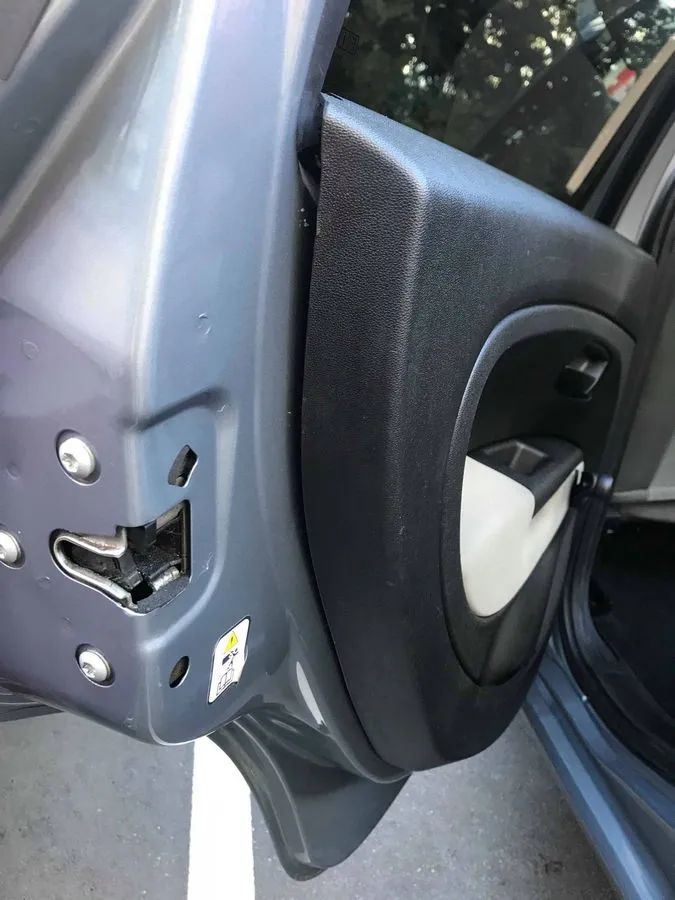
The materials of the door panels can be ruined by moisture to the extent that the only option left is to replace the expensive door card.
For example, in Porsches and Audis, genuine leather is often used, and if moisture comes into contact with the seam, the nearby area swells, leaving permanent marks. This is why it is critically important to protect the door panels with waterproof materials during the car window tinting process.
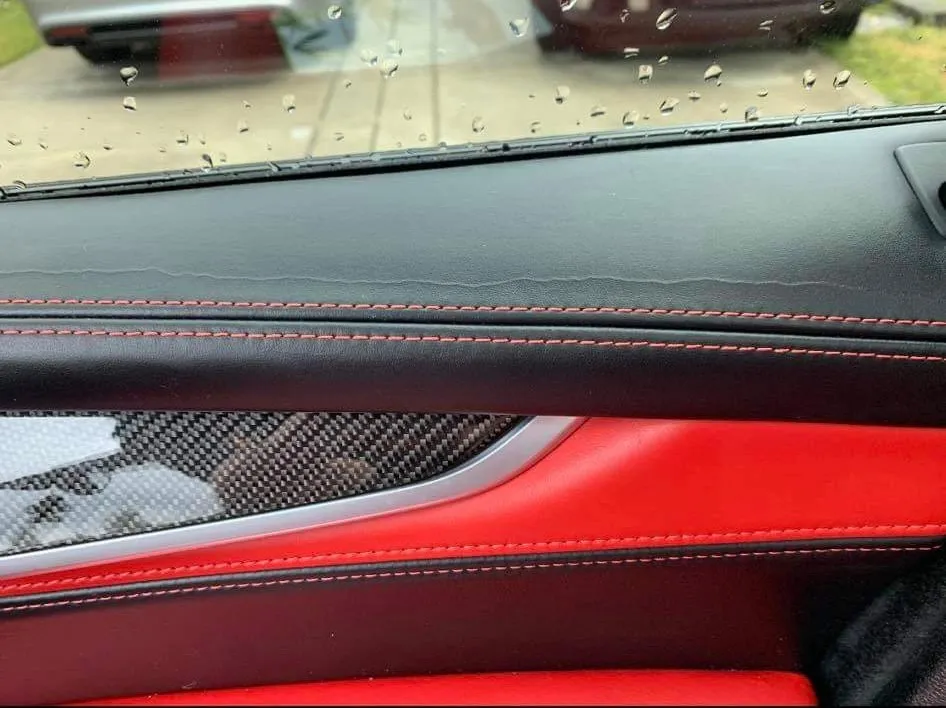
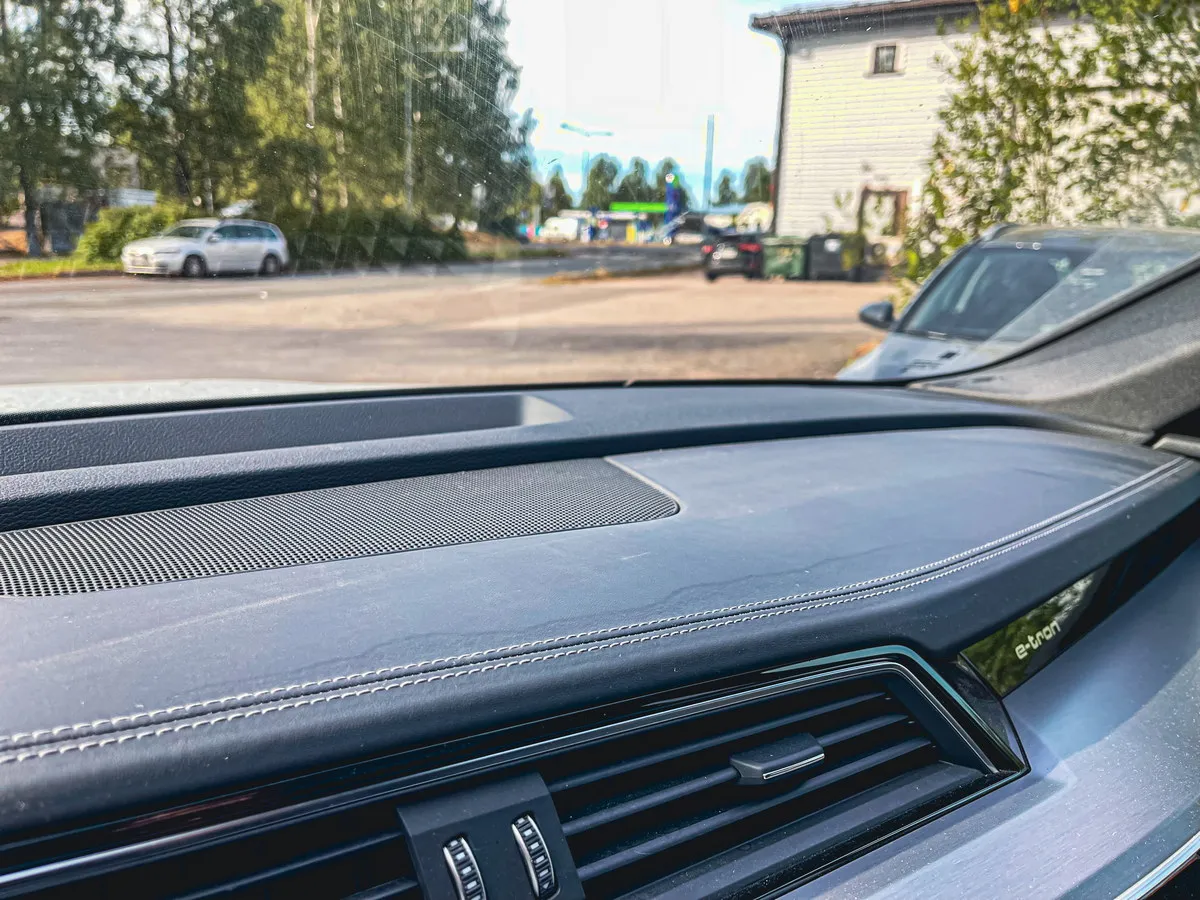
Car Paint Surface and Seals
Since the film is traditionally shaped and cut outside the vehicle, there shouldn’t be any cuts or similar marks on the outer surface. Even though working with a knife can be risky, it can be done without touching or damaging the customer’s property.
Dog Hair Beneath the Film
Many customers have pets that travel in their cars. While a large amount of hair in the car increases the risk of hair getting under the tinted film during car window tinting, at Restyling, we firmly believe that regardless of the amount of hair in the car, it is still possible to achieve a perfect hair-free result for window tinting.
The car window cleaning process is thus the most significant and precision-demanding step for a successful outcome.
Quality of Tint Film
The material plays a crucial role in years of use. High-quality material has good technical properties, such as heat rejection. Depending on the brand, tinting materials come with warranties ranging from 5 years to a lifetime.
Tint films are divided into the following categories: dyed films and ceramic films.
Dyed films are the most commonly used type of tint in Finland. They offer good heat rejection and durability over the years. They do not discolor or fade due to sun exposure over time. The warranty for dyed films and nano-ceramic films is typically 5 to 15 years.
Ceramic films are rarer in Finland but quite common in the USA, for example. Since Finland receives less sunlight than the USA, the market for ceramic films in Finland is relatively small. Ceramic films are significantly more expensive than traditional dyed tint films. The warranty for ceramic tint films is often lifetime.

In high-quality film, the tint is pleasant, with a greenish, dark gray, or bluish hue depending on the brand.
Inferior film typically turns violet and starts to look hazy and blurry. This is often the case with materials sold at hardware stores after 1 year of use.
Using low-quality films also poses significant risks for the future. When the film loses its effectiveness and needs to be removed, there’s a risk that the heating elements will detach, resulting in the loss of rear window defrosting function in the car. Similarly, nowadays, antennas or other receiving devices are often attached to windows as wires.
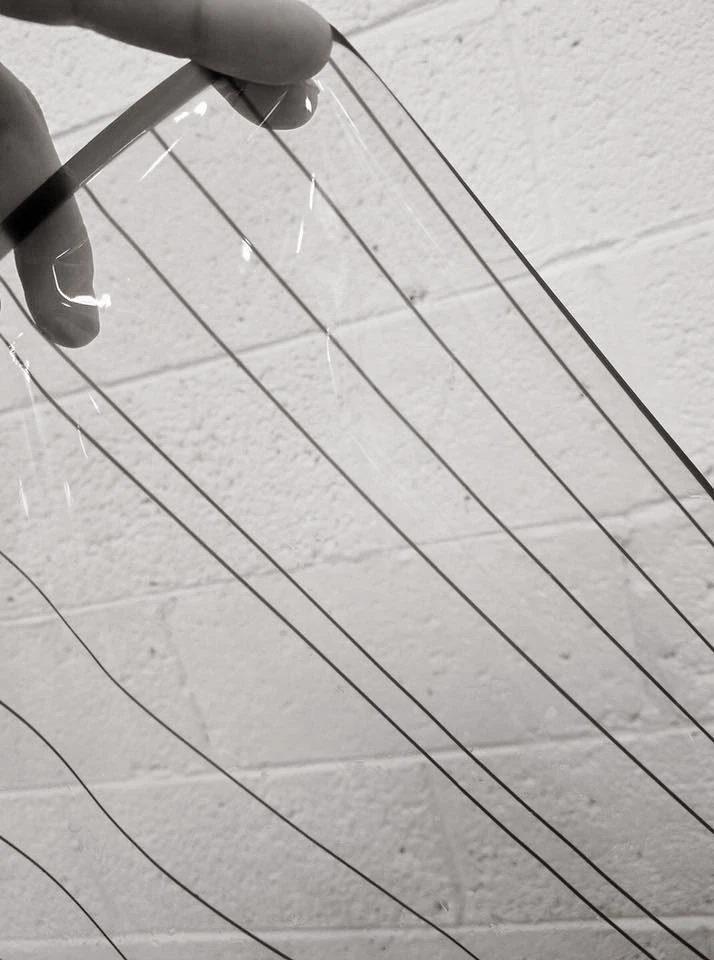
Here’s a great example of a €2000 mistake that could have been avoided. Worth watching:
https://www.instagram.com/p/CX…
An inferior film can also look like this after a year. This is the most common sign of poor-quality tint film due to inadequate adhesive.
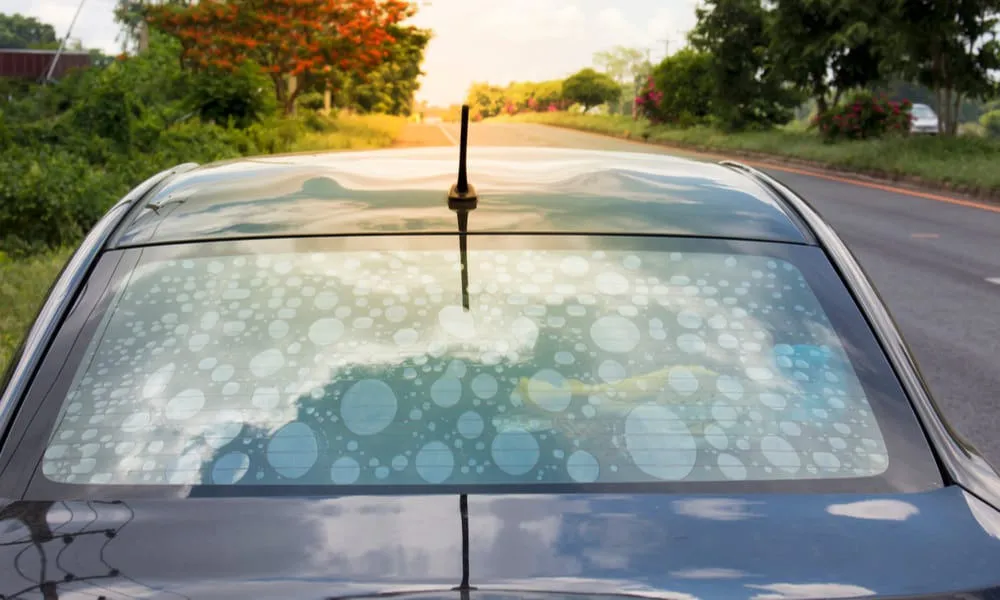
Would you like the work to be done responsibly, on schedule, and with the best value for your money? Ask for a quote from the professionals at Restyling Point, who do this with quality standards, values, and love.
On WhatsApp: +358445050624
Phone: +358445050624
Email: [email protected]
Restyling Point Oy – The leading company in wrapping and protection treatments in the Nordics



